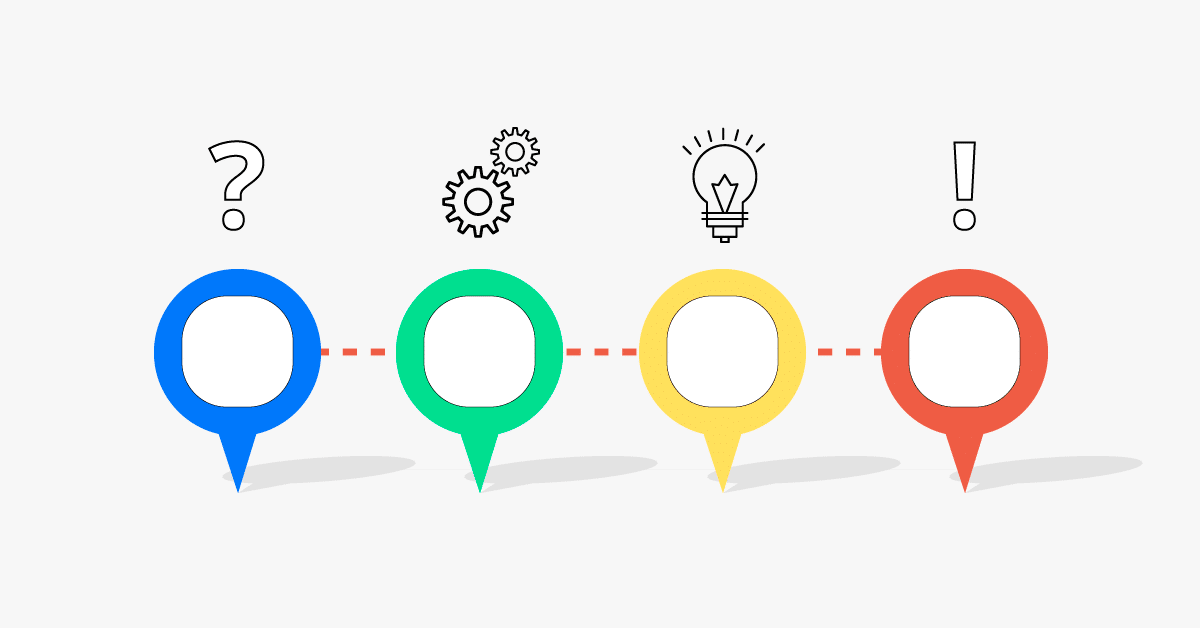5 Tips On How To Avoid Bias In Surveys
SHARE THE ARTICLE ON

Surveys are a valuable source of information to derive insights from. There are many factors that can affect the quality of the data you’re collecting. Survey Bias is one of the most tricky elements to keep under control when gathering data. It’s extremely difficult to discern if the survey results that you’ve accumulated have been tainted by bias in any way.
What complicates matters is that the bias is not always an intentional act on the part of the respondent. Sometimes people just tell you what they think you want to hear. In some cases, like in the healthcare or insurance industry, biased survey results can often result in conclusions that are negative or dangerous.
Humans are inherently biased by default, so the burden falls on the shoulders of the researcher to ensure that they manage to get what is unbiased and without prejudice.
In this blog, we’ll learn about the different types of survey bias and explore how to avoid bias in surveys.
What is survey bias?
Survey bias occurs due to errors in survey design, questions, data collection, or analysis. It refers to the deviation of the result from the true population parameters.
Over or under-representation in the sample, influences, or certain characteristics lead to inaccurate and misleading data causing bias in the survey. This can greatly impact the validity of your findings and compromise the quality of the study.
Understanding and addressing how to avoid bias in surveys is crucial to obtain accurate data in research and making informed decisions.
What are the common types of bias in surveys?
There are four primary types of survey bias. These types are:
- Sampling bias
- Response bias
- Non-response bias
- Researcher bias
Let’s look into these biases along with their examples.
1. Sampling bias:
This survey bias occurs when the method of selecting the respondents does not represent the entire target population. This means that certain segments of participation or characteristics are overrepresented or underrepresented. The sampling bias thus leads to gathering data that may not accurately reflect the views, experiences, or behavior of your target audience.
Example of sampling bias:
Let’s say a company wants to understand the appeal of their new product in the market. However, instead of using random sampling to select participants from the general population, the company surveys its employees.
The employees may have different preferences than the target market, which would result in biased survey results.
2. Response bias:
This bias occurs when the respondents share opinions or feedback that doesn’t accurately reflect the true behavior or belief. Factors such as social desirability, misunderstanding of questions, or acquiescence bias can result in response bias.
Example of response bias:
Say a healthcare research team conducts a survey on alcohol consumption among school students. Due to social stigma, the students may provide false information to present themselves as non-drinkers.
This can result in misrepresentation of the actual drinking habits of the school student population.
3. Non-response bias:
This type of bias arises when respondents choose not to participate in your survey. It refers to the gap between the feedback and the insights. It also occurs when respondents who participate in your survey drop out in the middle of it.
This represents the gap between the respondents who have different opinions but choose not to participate and those who participate in the survey.
Example of non-response bias:
Say a government agency sends online and email surveys about the usage of public transportation in the city. This survey falls victim to non-response bias because the agency gathers data from young professionals who use public transportation and has internet access.
It misses to reach senior citizens and those individuals who have limited internet access.
4. Researcher bias:
Also known as interview or experimenter bias, this occurs when the researchers’ belief or preference influences the survey. This can result in unintended manipulation of survey results.
Example of researcher bias:
A university conducts research to explore the impact of campus security programs on students. The teachers involved firmly believe that the program will greatly benefit the students and make the campus more safe.
During interviews, they unconsciously express their opinions which inadvertently influences students’ opinions.
Understand how easy it is to create, test, distribute, and design the surveys.
How to avoid bias in surveys?
We have covered the different types of biases you should be aware of as a researcher. In this section, we will share five tips on how to avoid survey biases.
To get honest feedback and minimize survey bias avoid framing questions that lead the respondents. Design survey questions for the right audience to prevent incomplete surveys. Make sure to design structured surveys and always give respondents the choice to say “no” to respond.
Now let’s explore this in detail.
1. Are you sure you’re not the one responsible?
When creating a survey, you need to be careful not to frame your questions in a way that leads respondents on. It’s important to avoid polarizing or emotionally triggering questions unless absolutely necessary as an upset respondent is likely give biased responses.

It’s also advisable to keep your language as simple as possible. A person who’s unfamiliar with your product or service needs to be approached in a clear and direct manner, or you risk getting incorrect data.
2. Good design = Good responses
Responses to web surveys can be influenced by their overall design. A cohesive, well-designed survey interface is likely to get better quality responses. This design language needs to extend to mobile platforms as well – with smartphones being as ubiquitous as they are today, there’s a huge likelihood that your respondents will attempt your survey on a mobile phone or tablet.

A modern survey platform can assist you in creating well designed, mobile friendly online surveys that help capture the data you need.
3. Know your demographic
Studying your demographic is a key part of making and distributing a survey, but did you know it’s a major factor in survey bias as well?

Surveys distributed to the wrong audience can lead to incomplete surveys and biased responses which will pollute your data.
4. Structure your survey
A key factor in reducing response bias is by making sure that the respondent has answer choices which are concise and not too wordy.
It’s best not to include additional questions within the primary question itself, as it can confuse or irritate your respondents.You must also keep in mind that the people taking part in your survey may not be familiar with the topic they’re being queried on, so overwhelming them with information can have a negative impact and result in biased answers.

It’s best not to include additional questions within the primary question itself, as it can confuse or irritate your respondents.You must also keep in mind that the people taking part in your survey may not be familiar with the topic they’re being queried on, so overwhelming them with information can have a negative impact and result in biased answers.
5. Do your respondents have an escape route?
Sometimes, even after supplying them with the necessary information, the respondent may feel that they just don’t know enough to answer the question appropriately.
This is perfectly acceptable and you need to account for it in your surveys by giving them the option to say so!

A simple “No”, or “Undecided”, or “I don’t know” or a “Beam me up, Scotty” can go a long way in ensuring the accuracy of your data.
Meet respondents where they are and drive survey completion.
Why should you avoid bias in the survey?
Survey bias diminishes the reliability and validity of the data you have put efforts into gathering. Whether it is sampling bias, response bias, or any other type, it defeats the purpose of conducting market research.
More importantly, flawed data can lead to poor decisions, which can result in low ROI and dissatisfaction among the target audience.
Here are some of the reasons why you need to understand how to avoid bias in surveys.
1. Erroneous data:
Bias can lead to gathering data that doesn’t accurately represent the target population. As a result, this will lead to errors in decision-making and can cause a setback in the growth of your business.
2. Low ROI:
All the time and effort you spend on your research process will go to waste if you gather biased data. Additionally, making business decisions based on these inaccurate and unreliable insights will result in low ROI.
3. Dissatisfaction among the target market:
Biased survey data will lead to poor decision-making. So, instead of developing products/services or interventions that can improve customer satisfaction, you will unintentionally do the opposite.
4. Loss of opportunities:
Biased survey data can cause you to overlook some significant trends and opportunities that may be critical for your decision-making.
5. Misleading perception:
Survey bias can mislead not only researchers but also the public and create misconceptions about certain issues.
✔ 500+ global brands in 40+ countries
✔ 100Mn+ annual surveys
Wrapping up
Now that we are at the end of our blog on how to avoid bias in surveys let’s look into some dos and don’ts to wrap it up.
✔ Do →
- Write clear questions by avoiding using double negatives, jargon, and confusing language.
- Check the answer options to ensure it covers every possibility, are clear, and are relevant to the question.
- Write the questions by keeping the target audience in mind. Tailor the question pattern to cater to them.
- Design surveys that are mobile-compatible, so it’s easy to use on all devices and is accessible.
✖ Don’t →
- Use leading language that influences respondents’ answers.
- Overload by using double-barrelled questions.
- Exhaust respondents with a single type of question. Use multiple question types and open-ended questions to keep respondents engaged.
Surveys are a key aspect of market research. So surveys conducted in a structured and unbiased manner can yield insightful data and help you make better business decisions. Utilizing the right market research tools can further enhance the accuracy of your surveys and empower you with actionable insights.
Avoiding Survey Bias = Better Data
Surveys are data sensitive and can result in you having to deal with a mountain of analysis. Modern online survey tools can definitely help you in collating this data so you can glean insights from it, but you need to feed them with the right questions.
Although it’s not feasible for your respondents to answer questions in a completely unbiased manner, a robust and carefully crafted survey can go a long way in helping you minimize bias.
FAQs on How to avoid bias in survey
- What makes a survey biased?
A survey is considered biased when the questions, order, or sampling methods favor certain groups, thus leading to inaccurate results. Some common factors that often cause survey bias are leading questions, unrepresentative samples, researcher bias, social desirability bias, and non-response bias.
- How do you avoid non-response bias in a survey?
Here are some ways to avoid non-response bias in your survey:
- Aim to build a sample that reflects the characteristics of the target population.
- Offer incentives to encourage people to participate.
- Send survey reminders to non-respondents.
- Use multiple modes to conduct surveys – online, phone, mobile-offline.
- How to avoid bias in research questions?
To avoid bias in research, you should use neutral and unbiased language for your questions. Avoid leading and unambiguous language that influences or confuses respondents. It is also best to run a soft launch with a small group of participants to identify potential biases.
- How to avoid bias in the sample?
You need to use the appropriate sampling technique to reduce bias in the sample. Methods like simple random sampling and stratified sampling give each individual an equal chance of being included in the sample. This helps ensure that the sample represents the target population and thus minimizes bias.
- What are the ways to reduce bias?
Here are three ways to help you identify how to avoid bias in a survey:
- Use random sampling to avoid sampling bias. Select participants in random order to ensure balanced representation.
- Ensure that the survey sample accurately reflects the characteristics of the larger population.
- Use neutral and clear language to avoid leading respondents to a particular answer.
- How do you identify if a survey is biased?
Keep an eye out for these signs to identify if your survey is biased:
- Questions that suggest a preferred answer or influence toward a specific viewpoint.
- When certain groups are less like to respond to the survey.
- When the sample doesn’t accurately represent the target population.
- Respondents provide answers they believe will be socially acceptable.
- What are the four types of bias in a survey?
The four types of bias commonly associated with surveys are:
- Sampling bias – When the survey sample does not represent the target market.
- Non-response bias – When respondents included in the study don’t respond.
- Response bias – When participants share inaccurate answers.
- Researcher bias – When the researcher/interviewer influences the data collection or interpretation of results based on their belief or preference.
Read more

Marketing Attribution Future Shifts Ahead
Is the data-driven age of marketing attribution coming to an end? SHARE THE ARTICLE ON Table of Contents Marketing attribution is a fundamental concept in

Customer Journey Touchpoints
Customer Journey Touchpoints See what question types are possible with a sample survey! Try a Sample Survey Table of Contents 01 What are Customer Journey

Understanding the usage of open ended questions
Understanding the usage of open ended questions SHARE THE ARTICLE ON Table of Contents What are open ending questions? Open ended questions provide the respondent
Version 6.11 of Voxco online is live!
Version 6.11 of Voxco online is live! Introducing additional customization options for ‘New Look & Feel’ and a new question type- ‘Carousel’ Make your surveys
Performance appraisal: Definition, benefits, steps and methods
Performance appraisal: Definition, benefits, steps and methods SHARE THE ARTICLE ON Table of Contents What is performance appraisal? Companies have employees from different departments, working

Getting meaningful returns from employee experience programs beyond 2020
The global economy is undergoing a forced recession, and it has thrown into chaos traditional working environments as well employee experience programs. However, this turmoil can be just the breather companies need to evaluate their Employee Experience (EX) programs




 English
English French
French
